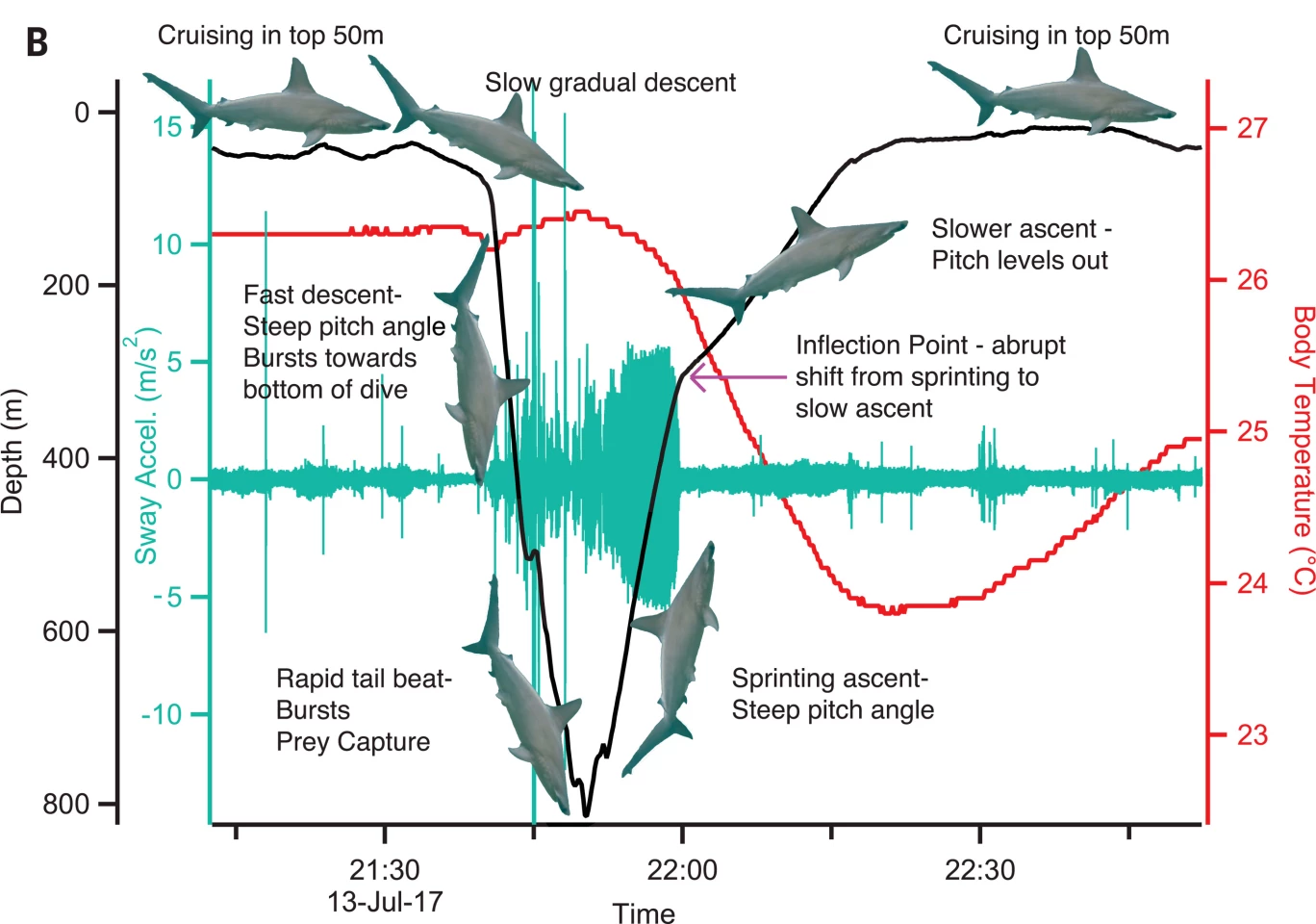Researchers at the University of Hawai’i at Mānoa have made a surprising first discovery: scalloped hammerhead sharks hold their breath like air-breathing marine mammals when they deep dive into cold waters to feed. The finding has improved our understanding of the iconic shark’s physiology but raised concerns about the potential damage caused by human interference with deep-sea ecosystems.
Most fish are ectothermic, meaning they cannot regulate their internal body temperature and rely on the environment to do it. As fish move from warm surface water to deeper, colder water, heat generated by muscle tissues is carried away by the blood and rapidly leaves the body through the gills.
Scalloped hammerhead sharks are found in coastal warm-temperature and tropical waters but repeatedly dive to depths of more than half a mile (800 m) to feed. The temperature at these depths can be as low as 41 °F/5 °C. The researchers wanted to determine whether changes in the scalloped hammerhead's core body temperature when it dove into cold water to feed were passively or actively controlled.
They fitted adult scalloped hammerheads with instruments to measure dive depth, ambient water temperature, tail activity, body orientation, and muscle temperature. They found the sharks’ muscle temperature stayed elevated throughout the dive but cooled suddenly as they headed back to the water’s surface. The sudden drop in temperature on the way up indicated that the sharks held their breath until they began resurfacing and started breathing again.

Based on computer models, the researchers suggest that scalloped hammerheads keep their gills closed when they deep-dive into cold water to prevent heat from escaping and to keep their bodies warm. The discovery is a first and was a complete surprise to the researchers.
“Although it is obvious that air-breathing marine mammals hold their breath while diving, we did not expect to see sharks exhibiting similar behavior,” said Mark Royer, lead author of the study. “This previously unobserved behavior reveals that scalloped hammerhead sharks have feeding strategies that are broadly similar to those of some marine mammals, like pilot whales. Both have evolved to exploit deep-dwelling prey and do so by holding their breath to access these physically challenging environments for short periods.”
Their theory was backed up by video of scalloped hammerhead sharks swimming at a depth of more than 3,400 ft (1,044 m), with their gills tightly shut, compared with images of them at the water’s surface, gills open.
The researchers found that while the sharks could hold their breaths for a considerable time, they only deep-dived in short bursts.
“Holding their breath keeps scalloped hammerhead sharks warm but also shuts off their oxygen supply,” Royer said. “So, although these sharks hold their breath for an average of 17 minutes, they only spend an average of four minutes at the bottom of their dives at extreme depths before quickly returning to warmer, well-oxygenated surface waters where breathing resumes.”
The scalloped hammerhead shark is a globally endangered species due to overfishing, primarily for its fins. The researchers’ discovery not only provides a more detailed understanding of the shark’s physiology but highlights the potential effect of human interference with deep-sea ecosystems.
“This new and detailed understanding of scalloped hammerhead physiology and ecology enhances our ability to effectively manage and conserve this iconic species by revealing potential vulnerabilities associated with changing ocean conditions or future human exploitation of these deep foraging habitats, such as deep-sea mining or large-scale fishing in the mesopelagic ‘twilight zone,' both of which might make it harder or more dangerous for these sharks to hunt their natural prey,” said Royer. “This extraordinary physiological feat that allows scalloped hammerhead sharks to expand their ecological niche into the deep sea could very well make them vulnerable to additional human impacts.”
The study was published in the journal Science.
Source: University of Hawai’i at Mānoa






